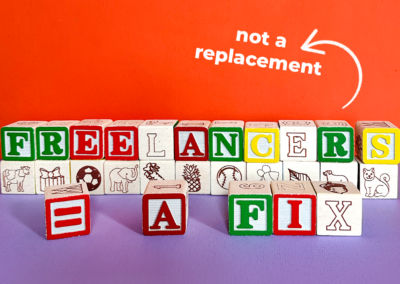Can we reshape the future of work by dismantling toxic masculinity?
47.4 million people voluntarily quit their jobs in 2021.
Why? In part, because of Toxic Masculine Leadership.
Which also Drove The Great Resignation. But how?
According to McKinsey’s Great Attrition Report, part of this exodus can be attributed to workers feeling under-valued and exploited. Some employees simply felt as if they were being asked to put their lives at risk — for a job.
What authority do I have to discuss dismantling toxic masculinity – as a man?
If we do not address toxic masculinity as we re-enter the workplace, this resignation reality will become our “Great Normal.”
Because we created the problem, it’s our responsibility to fix it. We have celebrated toxic masculine leaders for far too long at our own expense.

Women are encouraged to “lean in” and “power pose” their way through patriarchal systems that actively harm them. As long as men fail to dismantle this oppressive system, toxic workplaces will remain the norm, which detrimentally affects us all.
Why Should Companies Care?
Because tolerating toxic masculinity at work is costing them millions each year. A 2019 SHRM study found that toxicity in the workplace costs companies $223 billion and leads to significant disengagement. Gallup found that more than 85% of people are disengaged at work, costing the U.S. economy $450 – $550 Billion per year, and these numbers pre-date the Great Resignation.
How much does it cost companies to keep one toxic person?
Myth: Toxic Masculine Leadership Is Necessary
There is a common myth that strong leaders need to embody their inner Gordon Ramsey to “get work done.” The data suggests otherwise. According to Harvard Business Review, “Firms with more women in leadership positions are more profitable, socially responsible, and provide safer, higher-quality customer experiences.”
Don’t companies need a strong alpha to lead the pack?
The concept of Alpha Male was debunked in 1999 when David Mech, who originally coined the term, studied wild wolves. He found that Alpha males don’t exist naturally. In nature, the actual leaders are typically a mother and father, responsible for providing for the pack—as a team. In the corporate world, the concept of ‘Alpha Males’ echoes—the “behavior of captive, lonely animals” and demonstrates a fear response.
Many toxic leaders reference books that justify their behavior, including the Holy Grail of CEO Books: Think & Grow Rich written by Napoleon Hill in 1937. Would it surprise you that Napoleon Hill fabricated stories in the book to prove his point and is considered America’s first modern scammer? Pioneers of industry have built their entire career around this lie.
How Do We Dismantle Toxic Masculinity In Our Workplace?
Before we tackle this issue, we must answer these questions:
- Who benefits from this current system supporting toxic masculinity at work?
- Is this a systemic issue or specific to a few employees?
- Is it worth my time and energy to address this problem, or does it make more sense to move on?
- Are there any leaders at my company who embody healthy leadership skills that balance both the feminine and masculine?
How do we address this issue on multiple levels?
For Staff (Any Level)
- Gather data that builds a case for how much toxic masculine leadership costs the company
- Find allies & people who believe this is an issue but are fearful of speaking up
- Practice setting boundaries as a team, such as not allowing that toxic person to dominate meetings or interrupt colleagues while they are speaking
- Recognize the power you do have, as employees have more leverage than ever due to the Great Resignation
Mid-Level Managers
Company culture is defined by the worst behavior tolerated.
- Ask your staff whose behavior is toxic to the team and address it in staff meetings
- Conduct staff exit interviews and review past records of who quit to look for patterns
- And if you don’t hold exit interviews, start now. It’s essential information to obtain and leverage – whether you have 2 employees or 2,000
- Ask staff if the company lost or gained their trust during the pandemic?
- Ask which style of leadership (compassionate or fear-based) has consistently produced better results?
Executives
- Determine who you are currently rewarding and why
- Reevaluate how you measure success
- What’s more important: quarterly earnings or employee retention? Do a listening tour with long-term staff hearing their grievances
- Support and fund your Employee Resource Groups as these communities are safe spaces for employees to be heard
Consider these suggestions as the starting point, as there’s much more to unpack, which will take both time and effort.
Reimagine The Future of Work
Our current system of work actively harms employees. We have a choice between returning to a normal that is inhumane or choosing to reshape the future of work.
So what type of leaders do we want in our future? Leaders who can embrace both strong feminine and masculine sides of leadership, such as Prime Minister Jacinda Ardern, who had the lowest COVID rates globally, or toxic leadership that isn’t open to learning or change?


Jeff’s Socials: Instagram, Twitter, LinkedIn, YouTube, TikTok, Medium
Editor’s Socials – Kelly Dyer: Instagram, LinkedIn
[/et_pb_text][/et_pb_column][/et_pb_row][/et_pb_section]



